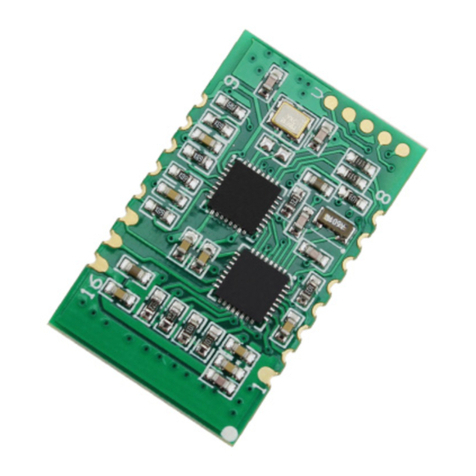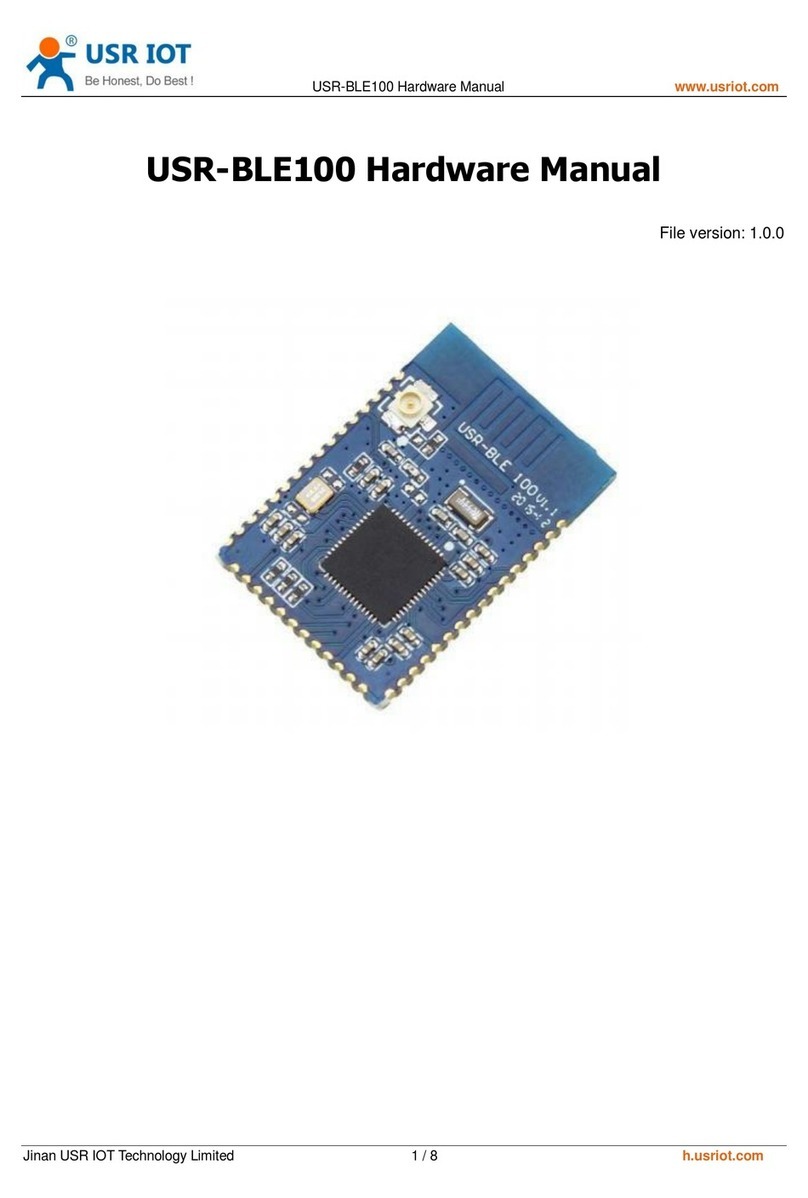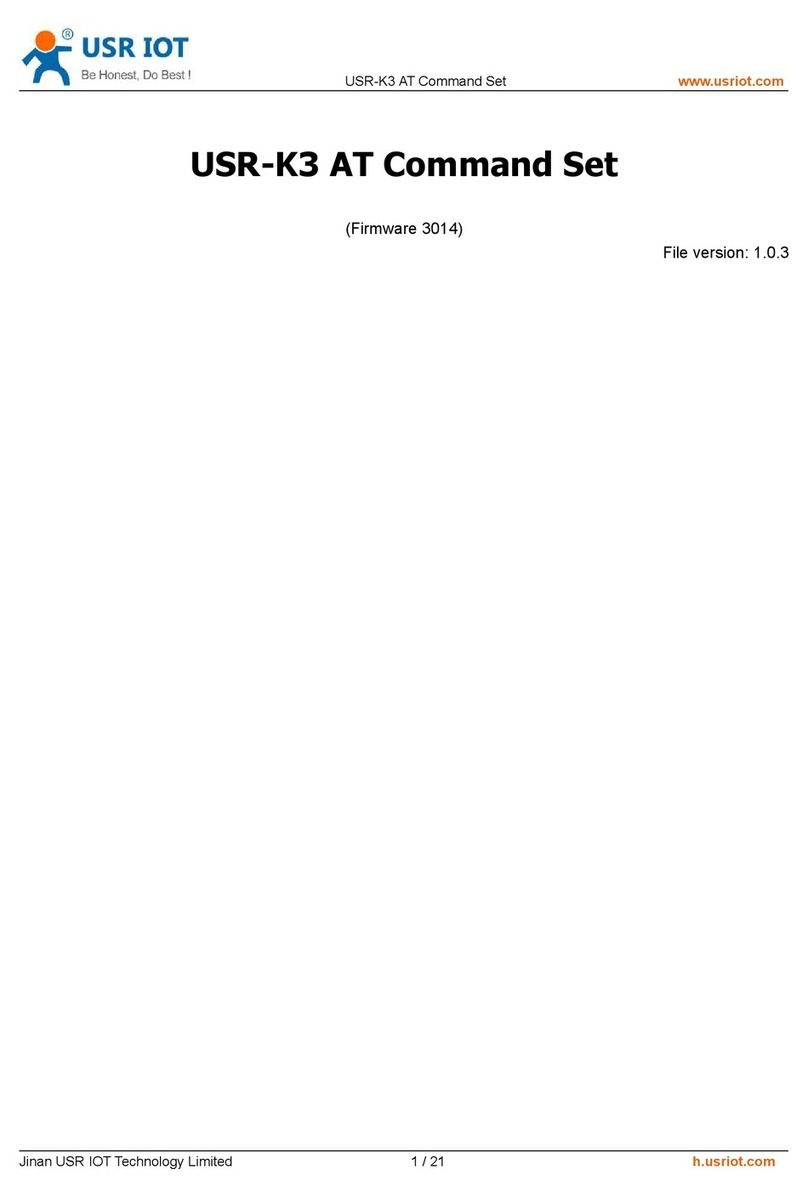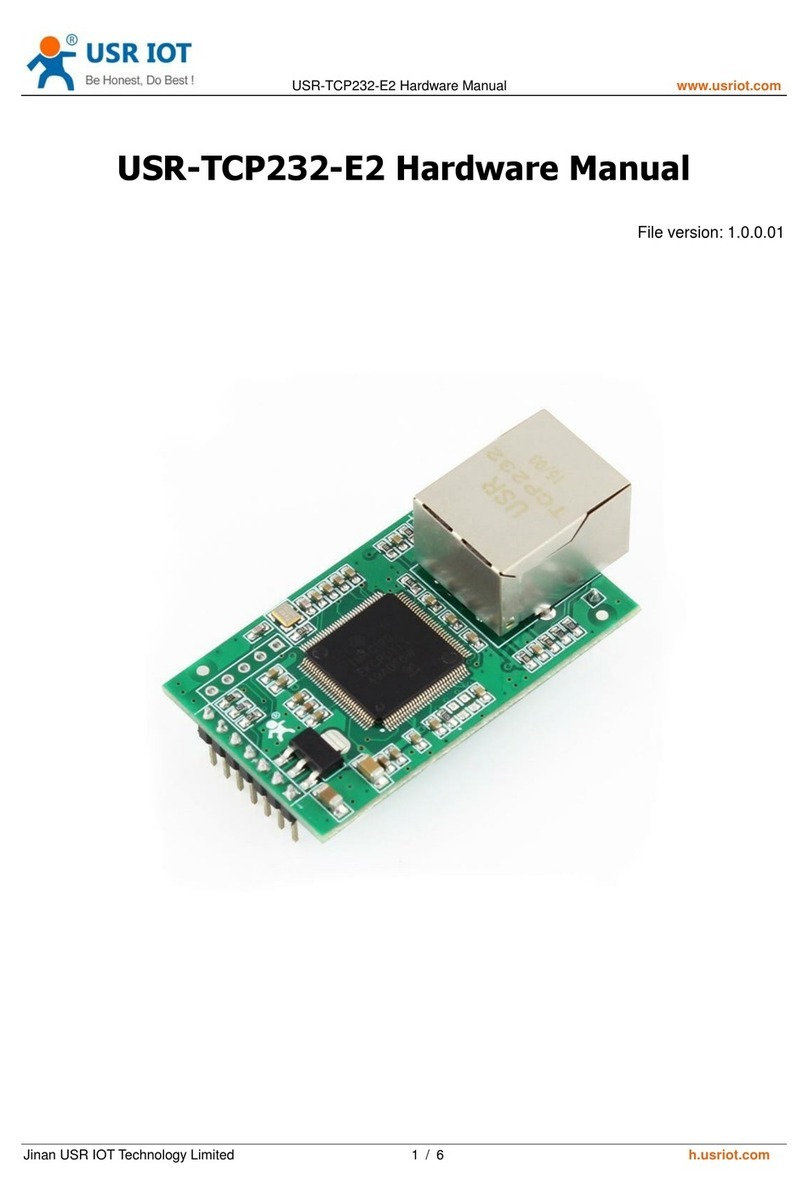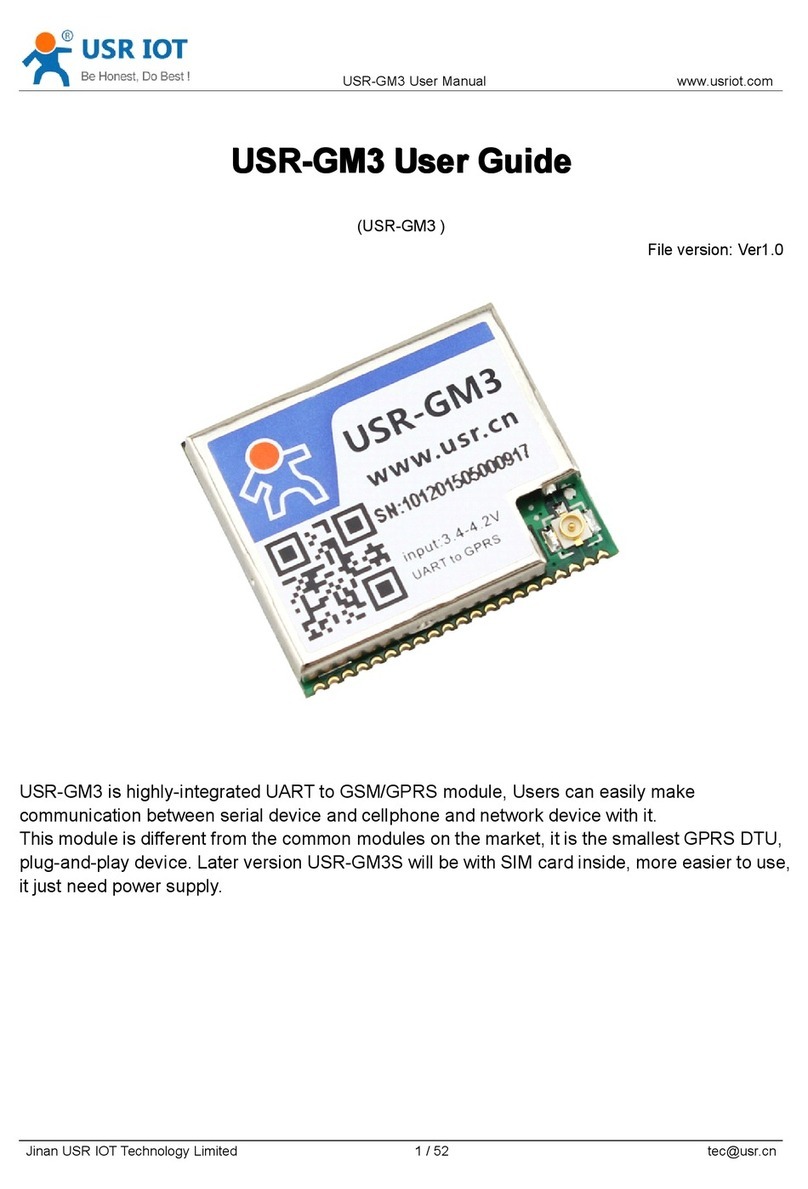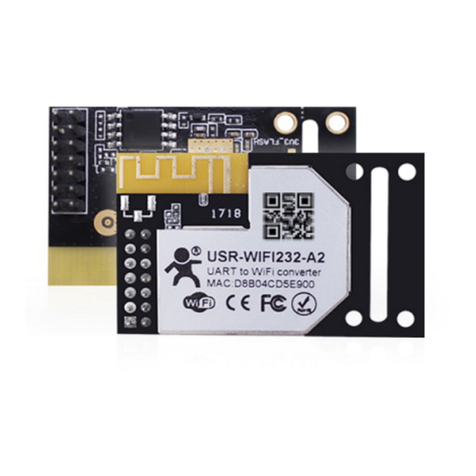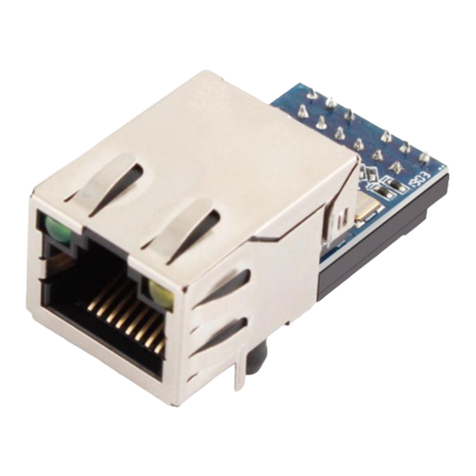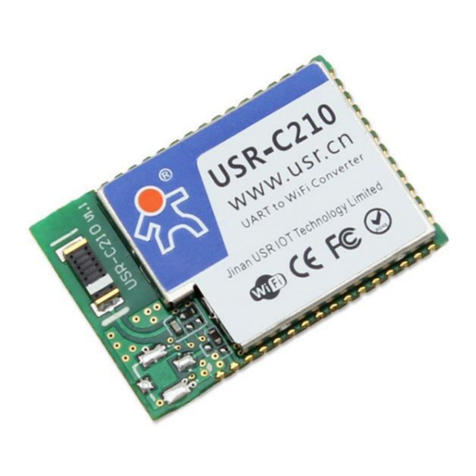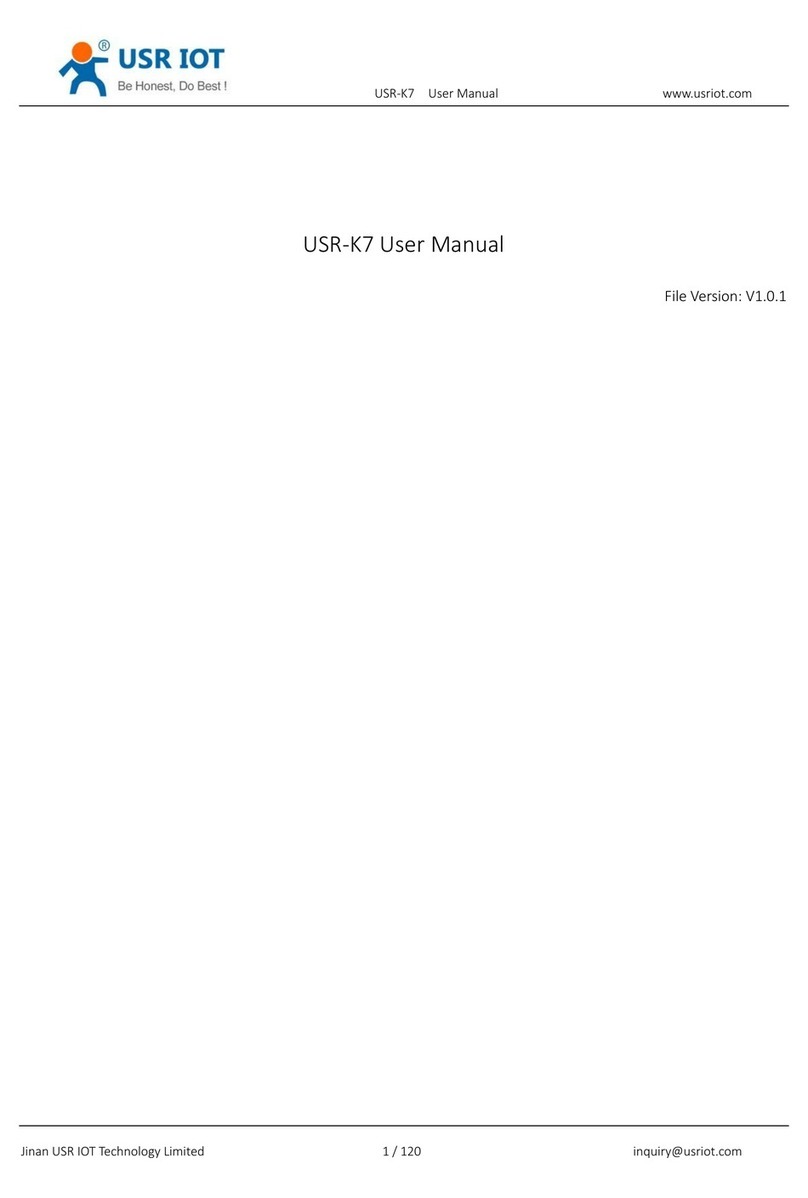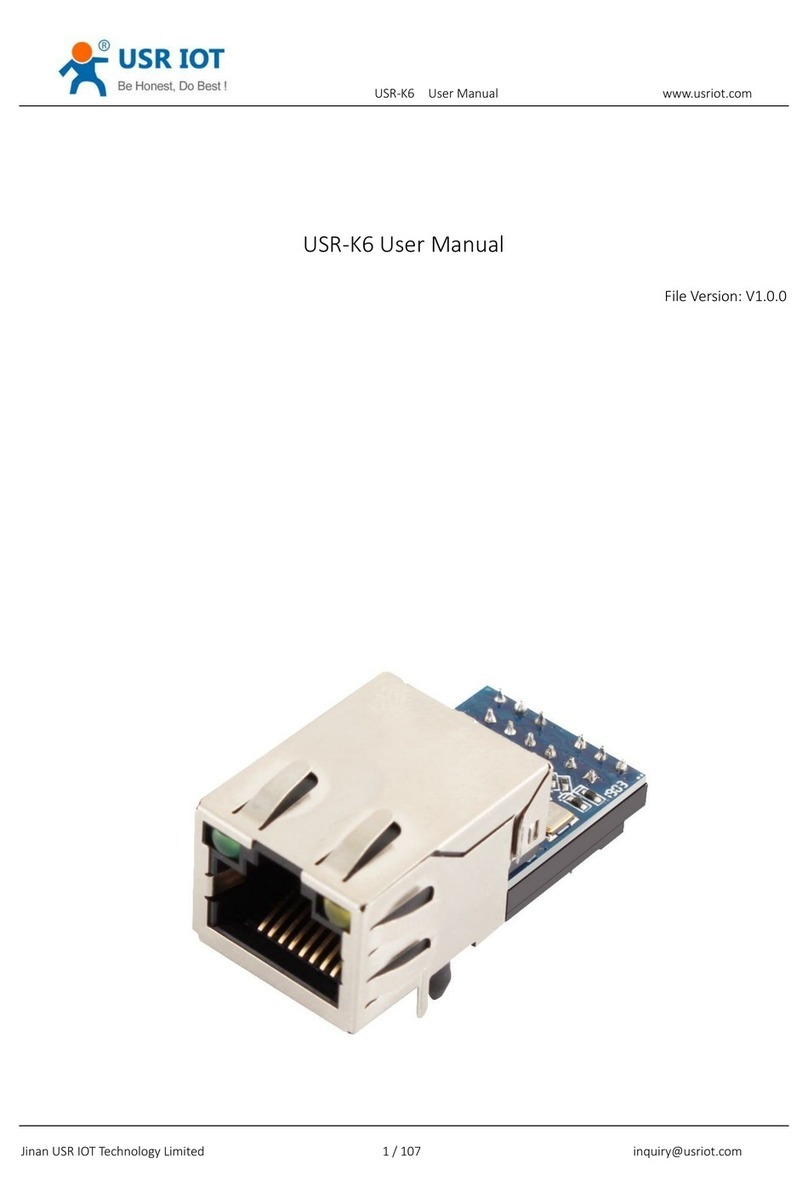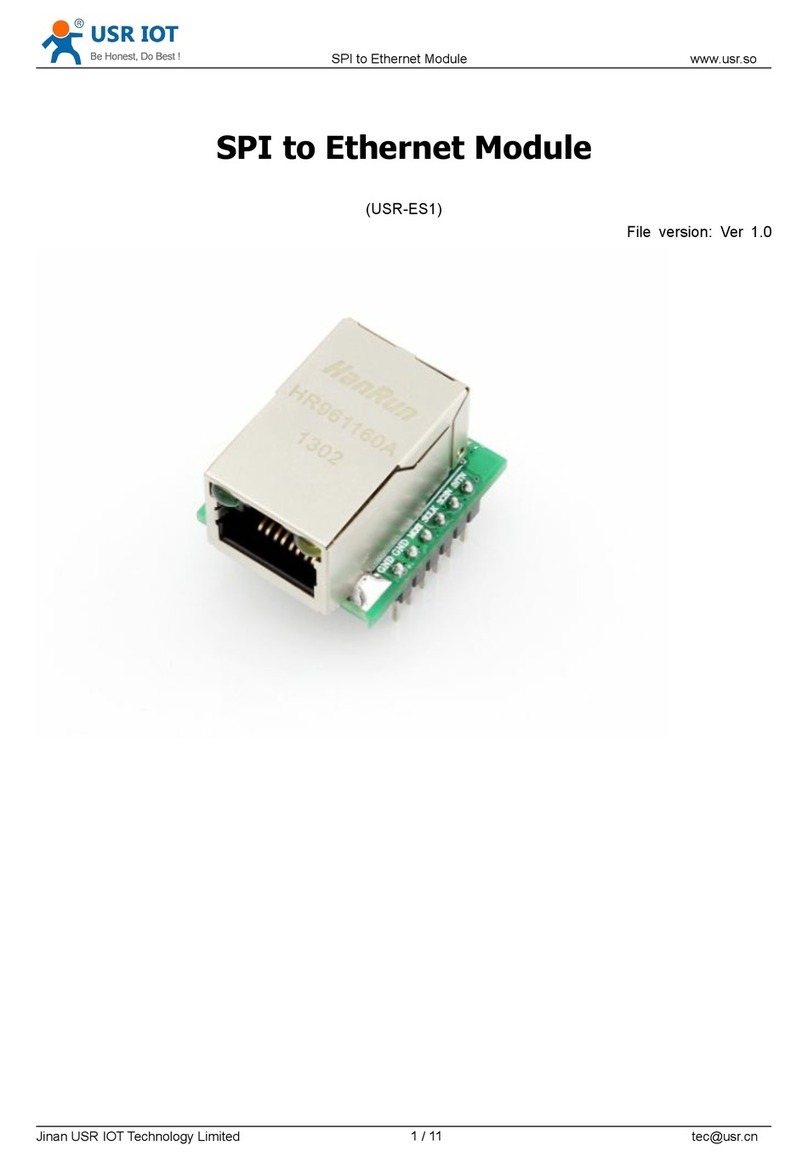
USR-TCP232-T2 user manual www.usriot.com
Jinan USR IOT Technology Limited www.usriot.com
Contents
USR-TCP232-T2 User Manual......................................................................................................................................................1
1. Quick Start...............................................................................................................................................................................4
1.1. Hardware Testing Environment....................................................................................................................................4
1.2. Connection...................................................................................................................................................................4
1.3. Default parameter........................................................................................................................................................6
1.4. Data transport test....................................................................................................................................................... 7
2. Overview................................................................................................................................................................................. 8
2.1. Brief Introduction.........................................................................................................................................................8
2.2. Features........................................................................................................................................................................8
2.3. Basic parameters..........................................................................................................................................................9
3. Hardware parameter.............................................................................................................................................................10
3.1. Pin define................................................................................................................................................................... 10
3.1.1. Pin Definition.................................................................................................................................................. 10
3.1.2. Dimension.......................................................................................................................................................12
3.1.3. Evaluation Kit.................................................................................................................................................. 12
3.2. Hardware Reference Design...................................................................................................................................... 14
3.2.1. Typical Application Connection.......................................................................................................................14
3.2.2. Power Interface...............................................................................................................................................14
3.2.3. UART Interface................................................................................................................................................15
4. Module function................................................................................................................................................................... 15
4.1. Network basic function..............................................................................................................................................16
4.1.1. IP address/ subnet masks/gateway.................................................................................................................16
4.1.2. Web server......................................................................................................................................................17
4.1.3. Firmware upgrade in webpage....................................................................................................................... 18
4.2. Socket function.......................................................................................................................................................... 18
4.2.1. TCP Client........................................................................................................................................................19
4.2.2. TCP Server.......................................................................................................................................................21
4.2.3. UDP Client.......................................................................................................................................................22
4.2.4. UDP Server......................................................................................................................................................23
4.2.5. Httpd Client.....................................................................................................................................................24
4.2.6. TCP and UDP mechanism................................................................................................................................26
4.3. DHCP and DNS Function............................................................................................................................................ 26
4.4. VCOM.........................................................................................................................................................................28
4.4.1. Module Work as Client................................................................................................................................... 28
4.4.2. Module Work as Server.................................................................................................................................. 29
4.4.3. Create VCOM.................................................................................................................................................. 30
4.5. Serial port function.................................................................................................................................................... 31
4.5.1. Basic parameters............................................................................................................................................ 31
4.5.2. Serial port framing..........................................................................................................................................32
